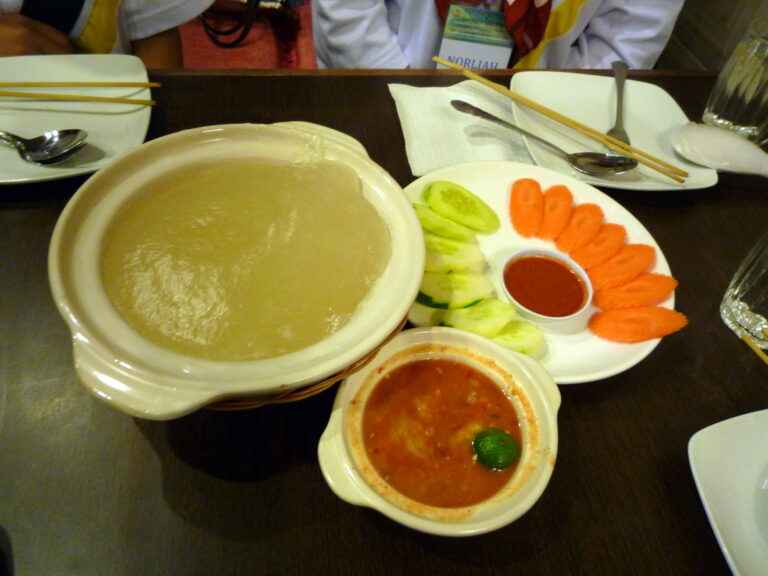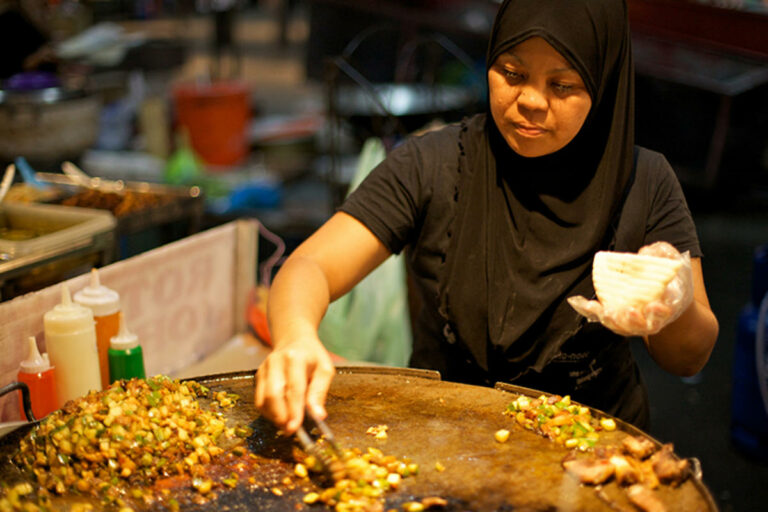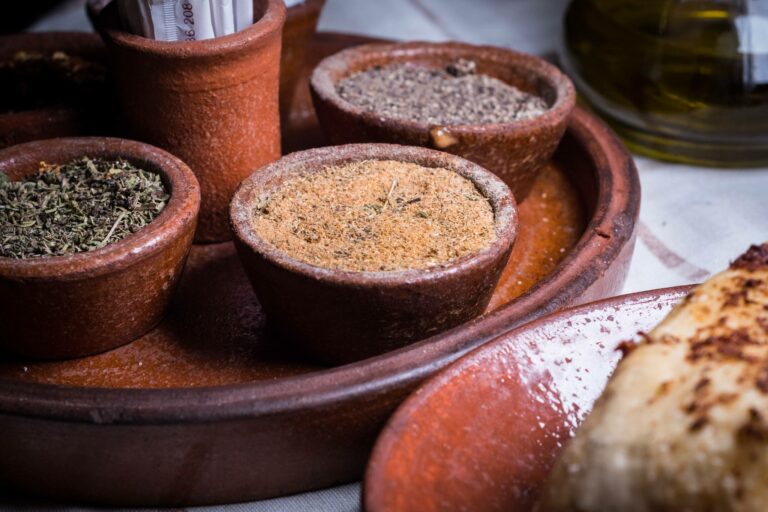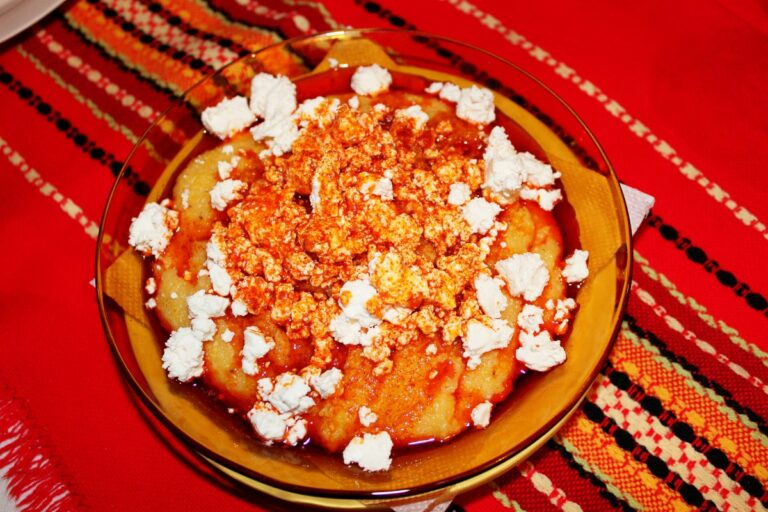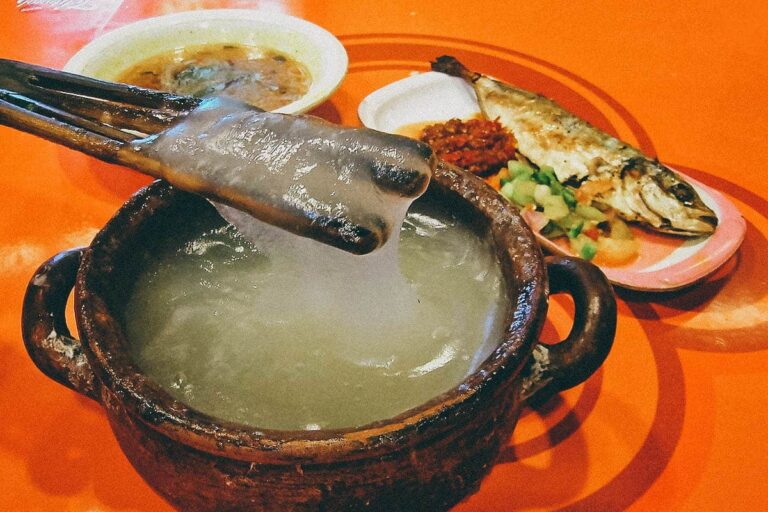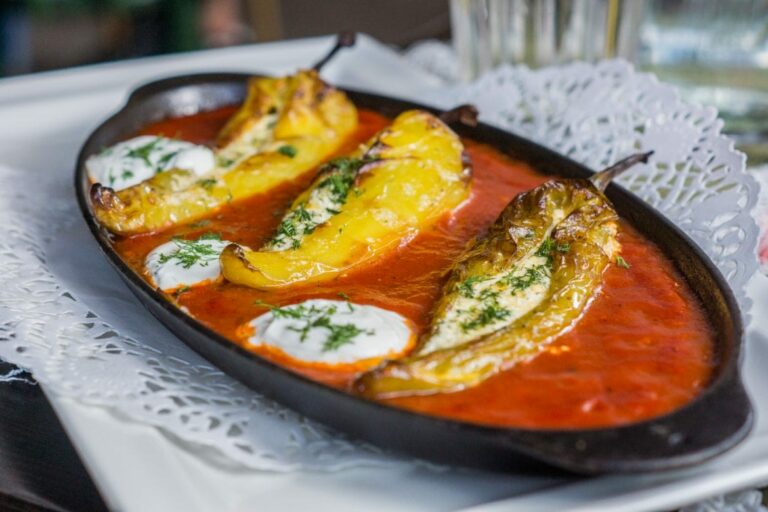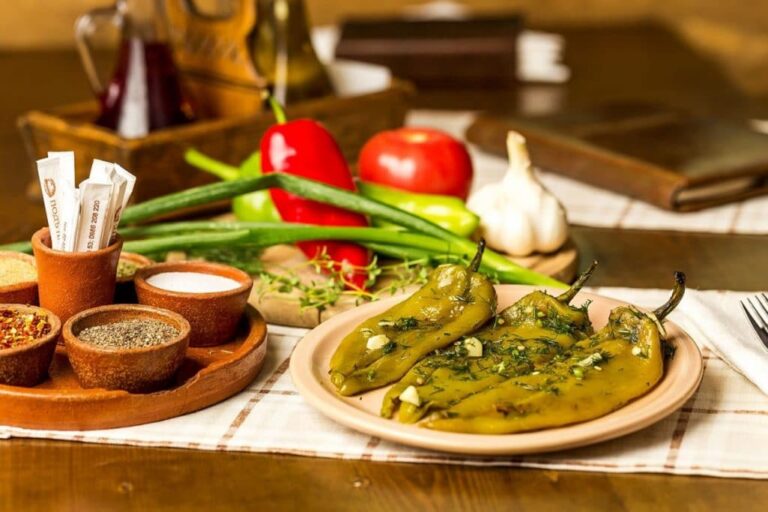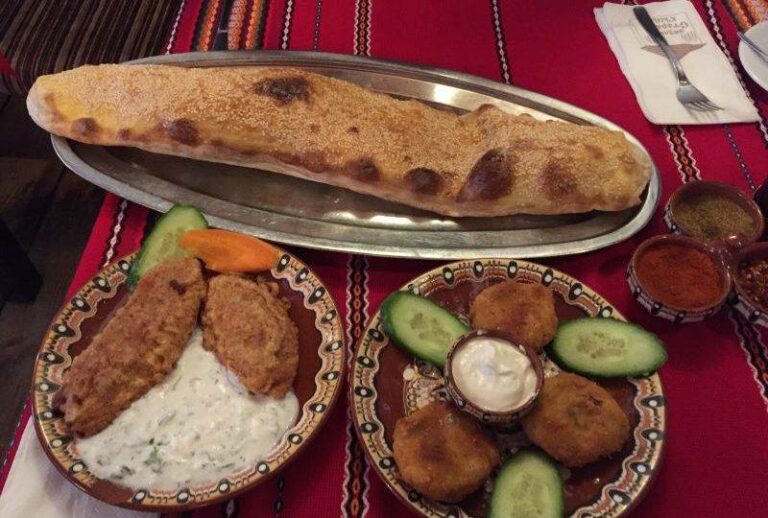Introduction: Bruneian cuisine and its ingredients
Bruneian cuisine is a blend of Malay, Chinese, and Indian influences, which has resulted in a unique culinary experience. The cuisine is characterized by the use of local ingredients, spices, and herbs. The country’s tropical climate and rich soil support the growth of a variety of plants and fruits that are used in Bruneian dishes.
Belacan: the pungent shrimp paste
Belacan is a popular ingredient in Bruneian cuisine. It is made by fermenting shrimp with salt, and the resulting paste has a pungent aroma and flavor. Belacan is typically used as an ingredient in sambal, a spicy condiment that is used to flavor various dishes, including grilled fish, curries, and stir-fries. Belacan is also used to flavor soups and stews.
Ambuyat: the starchy sago dish
Ambuyat is a starchy dish made from the sago palm. The sago is processed into a flour, which is then mixed with water to form a viscous pudding-like consistency. It is traditionally eaten with a bamboo stick called a chandas, which is used to scoop up the sticky ambuyat. Ambuyat is typically served with a variety of side dishes, such as grilled fish, stir-fried vegetables, and sambal.
Ikan bakar: the grilled fish specialty
Ikan bakar is a grilled fish dish that is popular in Brunei. The fish is marinated with a paste made from turmeric, garlic, ginger, and lemongrass before being grilled over hot coals. Ikan bakar is typically served with sambal, a spicy dipping sauce, and a side dish of vegetables or rice.
Umai: the raw fish salad
Umai is a popular raw fish salad that is commonly eaten in Brunei. The dish is made from fresh fish that is sliced thinly and marinated in lime juice, chili, and salt. The acidity from the lime juice “cooks” the fish, giving it a tender texture. Umai is typically served with sliced onions, herbs, and chilies.
Tapai: the fermented rice dessert
Tapai is a sweet, fermented rice dessert that is popular in Brunei. The dish is made by fermenting cooked rice with yeast or a rice wine starter culture. The resulting mixture is then left to ferment for several days until it becomes slightly sour and effervescent. Tapai is typically served as a dessert, but it can also be used to flavor savory dishes.
Cincaluk: the fermented shrimp condiment
Cincaluk is a fermented shrimp condiment that is commonly used in Bruneian cuisine. It is made by fermenting small, salted shrimp with rice and water. The resulting mixture is then left to ferment for several weeks until it becomes a thick, salty paste. Cincaluk is typically used as a condiment for rice dishes, noodles, or stir-fries.
Bambangan: the tangy wild mango fruit
Bambangan is a tangy, wild mango fruit that is commonly found in Brunei. The fruit is typically used to flavor soups, stews, or curries. Bambangan is also used to make a traditional Bruneian pickle called acar bambangan. The pickled fruit is typically served as a side dish or condiment for rice dishes.

